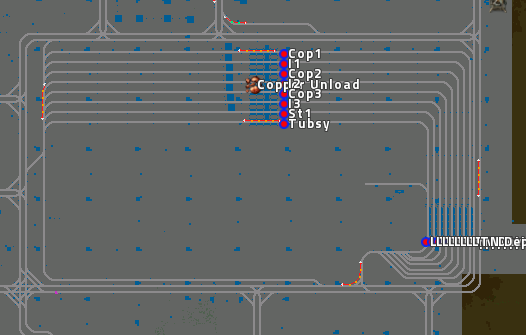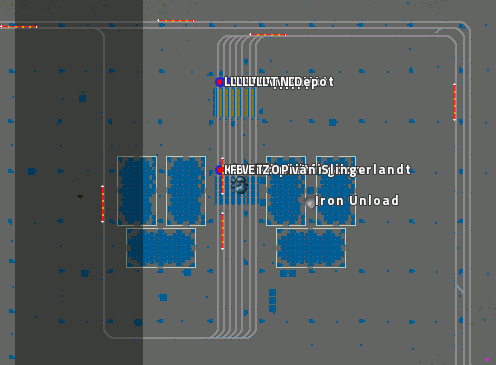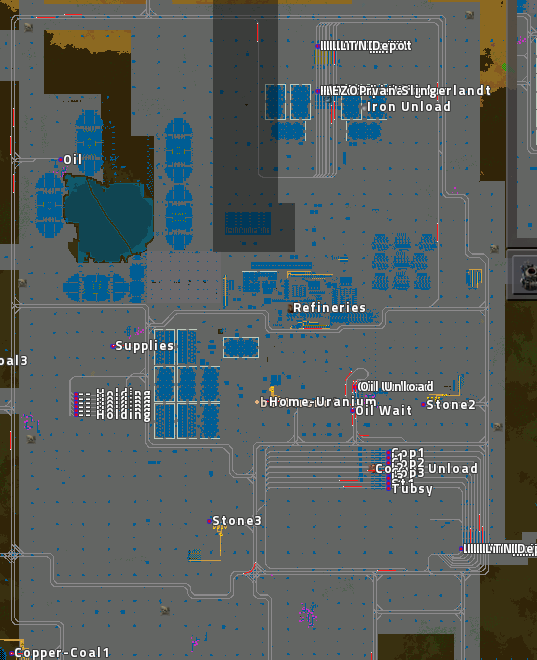I use LTN mod, but this also has nothing to do with the mod. It has to do with my laying down the rails I guess. But in a nutshell, I have stations that request various ores, and trains go and get them and bring them back. This is probably better explained in a picture. So here's what my original setup looked like (for the record, I've disabled most trains while writing this and taking screenshots, for the sake of being able to see the rails better):

In this scenario, trains merge in towards the inner unloading area from the left (or the bottom). They unload at the top area, and merge back into the system at the bottom. So you can, just by the layout of this, imagine where the bottleneck is: at the bottom, merging back into the network.
After trying a few things, I came up with this scenario:

Trains come in from the top left, go all the way south, east, north, then split into the different unloading tracks, and finally merge back up at the north end. In this setup, I actually experience a lot less traffic jams, but I still do. If you follow the inner track, you'll see that on the east side, it merges back with the outer system. I get some traffic jams there. The track also go further south, and then turns west, for the traffic going to the other area of the map. Maybe it'll help you see the whole picture:

So the first scenario above is on the south east side of this larger map, and the second one is on the north east area. So when trains leave the northern depot, they either either enter the network on the right, if they're heading south, and if not, will loop around the refineries in the middle, going west. My main traffic jam area there is where they merge to go west.
All together, there's about 40 trains going around in the whole thing. The entire map is much larger than this, and most of the mining area are on the outskirts. This central area is the main base, aka, where everything gets processed.
So what I get of all this is that my issue, regardless of which layouts I've tried, is when multiple trains go back into the system after unloading their goods. I understand that I have 8 lines merging onto 1, but can anyone suggest a different way of doing this so that I can get the traffic to go back out without stacking up at the merge points?
Much appreciated in advance..



